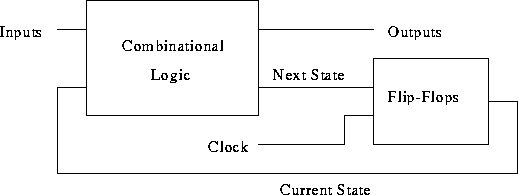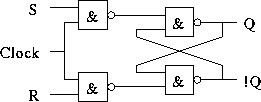There will always be some asynchronous elements in a circuit which interfaces to the real world environment.
Non-overlapping clocks.

This is the basic idea, to be modified for actual use.

Tom Kelliher, CS 220
Oct. 27, 2003
Read 4-3.
First four homework problems will be due Monday. Remaining two after, following lab tutorials.
Finished introduction to VHDL. See course web page for VHDL code.
Flip-flops
There will always be some asynchronous elements in a circuit which interfaces to the real world environment.
Non-overlapping clocks.

This is the basic idea, to be modified for actual use.



Behavior.
Latched when clock is low.
A solution: non-overlapping clocks. (Achieved with master-slave flip-flops.)

(Think of this as a logic primitive.)